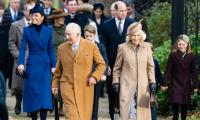Pakistan’s struggle to tame inflation is far from over but signs that things are not getting worse are growing, as the year-on-year headline inflation rate fell to a 34-month low of 9.6 per cent for the month of August. This is the first time inflation has dropped to the single digits since October 2021, with stabilizing commodity prices and a relatively strong rupee seen as among the key factors driving down inflationary pressures. It is now hoped that the lower inflation rate has cleared enough room for the SBP to initiate a significant interest rate cut, with the central bank set to hold its next review on September 12. The official interest rates currently stand at 19.5 per cent and real interest rates (the current official rates minus the rate of inflation) are at around 9.9 per cent. The latter turned positive after 37 months in March of this year and have only risen since, building expectations for further rate cuts. Lower borrowing costs for households and businesses could help kick-start economic activity and lift the sluggish growth rate. Moreover, lower rates could also lower the government’s debt-servicing burden and help make the fiscal deficit more manageable.
However, even if the SBP does deliver the goods, the country is far from any victory lap as far as the overall economy grows. The ongoing decline in the inflation rate is highly contingent on stable commodity prices at the global level, something that is largely beyond the control of domestic policymakers, and a stable rupee. The latter will require the government to keep its fiscal house in order, while any delays in securing the IMF programme could also threaten the progress that has been made thus far. In this context, the FBR’s Rs98 billion shortfall is not welcome news and highlights the state’s imperative to establish a proper tax collection system as soon as possible. Setting aside the fragility of the inflation decline, the fact remains that most Pakistanis are still struggling to meet the cost of living; even those with relatively better jobs and incomes are struggling with high prices and high utility bills. Some economists are even attributing August’s seeming inflation victory to the base effect, which occurs when the previous year’s inflation rate (the base) is very high and distorts the current rate by making it seem lower than it actually is.
Anyone who has just paid their electricity bill or bought this week’s groceries would sympathize with this theory. Prices might be growing at a much slower rate than this time last year, but given just how rapidly prices skyrocketed at the time, a lower inflation reading does not necessarily imply affordability. Changing the economic picture for the average Pakistani will require much deeper economic reforms and changes than have been attempted thus far. IMF programmes and rate cuts can only mask the economy’s underlying structural weaknesses for so long.
Deadlock finally broken on Thursday , with India, Pakistan and ICC agreeing to hybrid model
No one enjoys giving up portion of their income and so revenue collection measures incur people’s resentment
FO rightly rebukes these sanctions, terming them “biased” and warning of their dangerous implications for regional...
Senator says that Pakistan should focus on centralised climate authorities to local leadership at provincial level
Citizens to be assigned digital identity, encompassing data on property, wealth, assets, health, and other social...
Wealthy Global North expresses concern over plight of migrants but turns blind eye when they are in real danger







